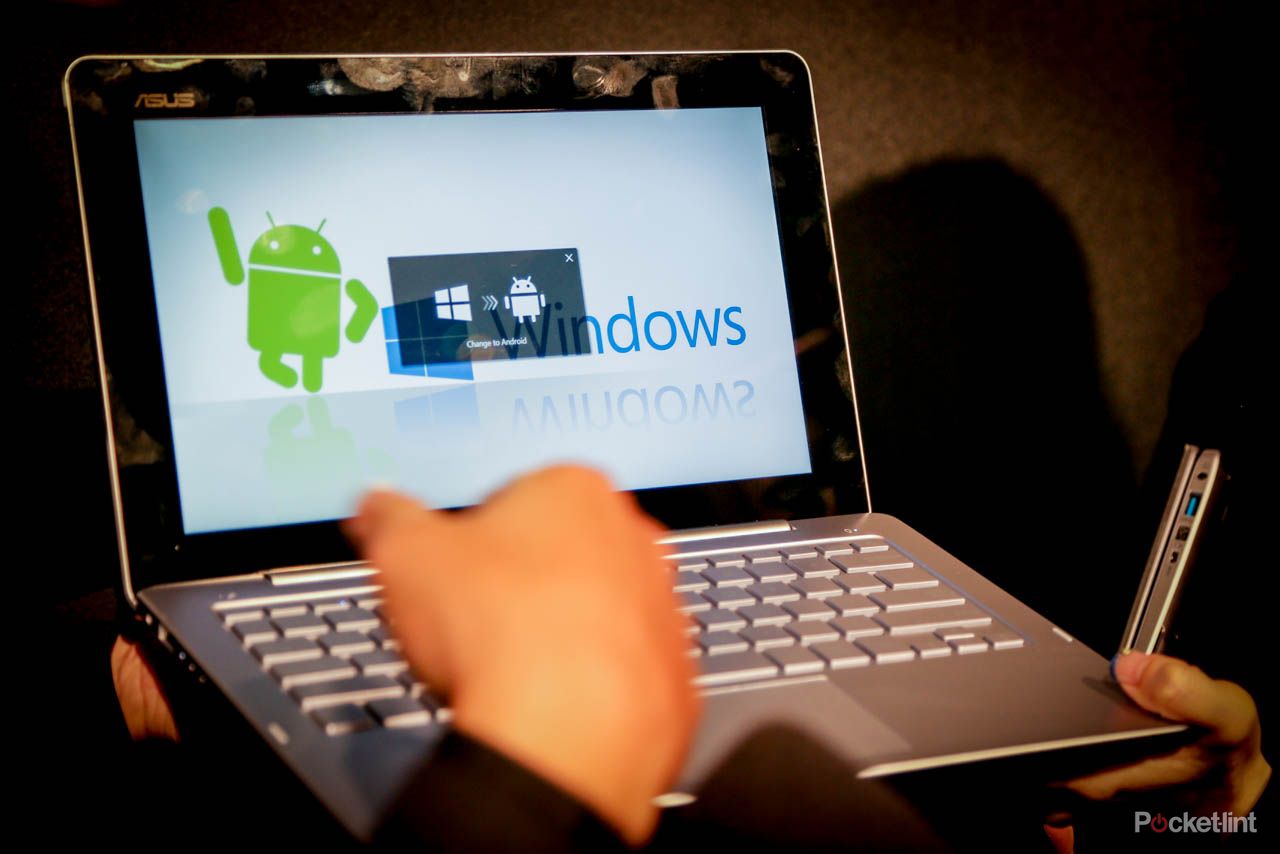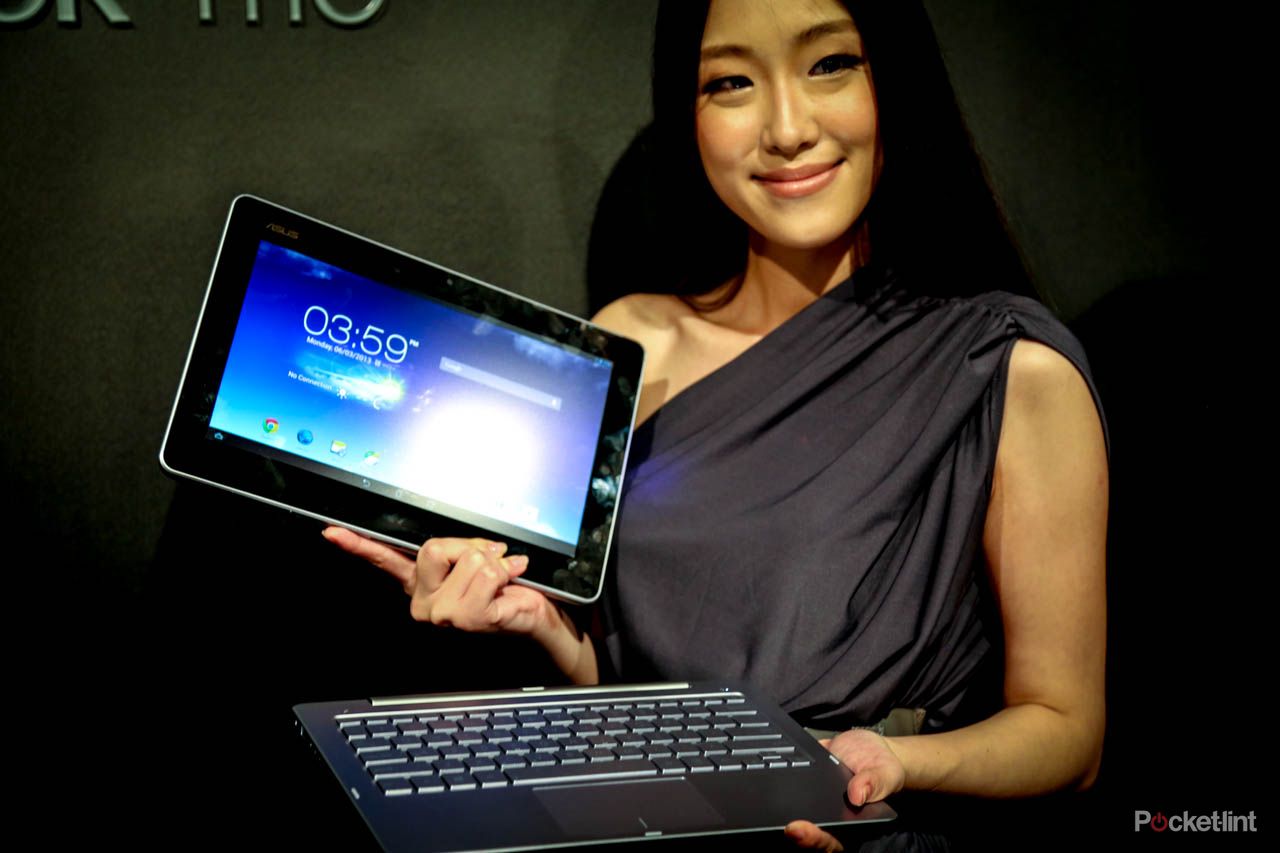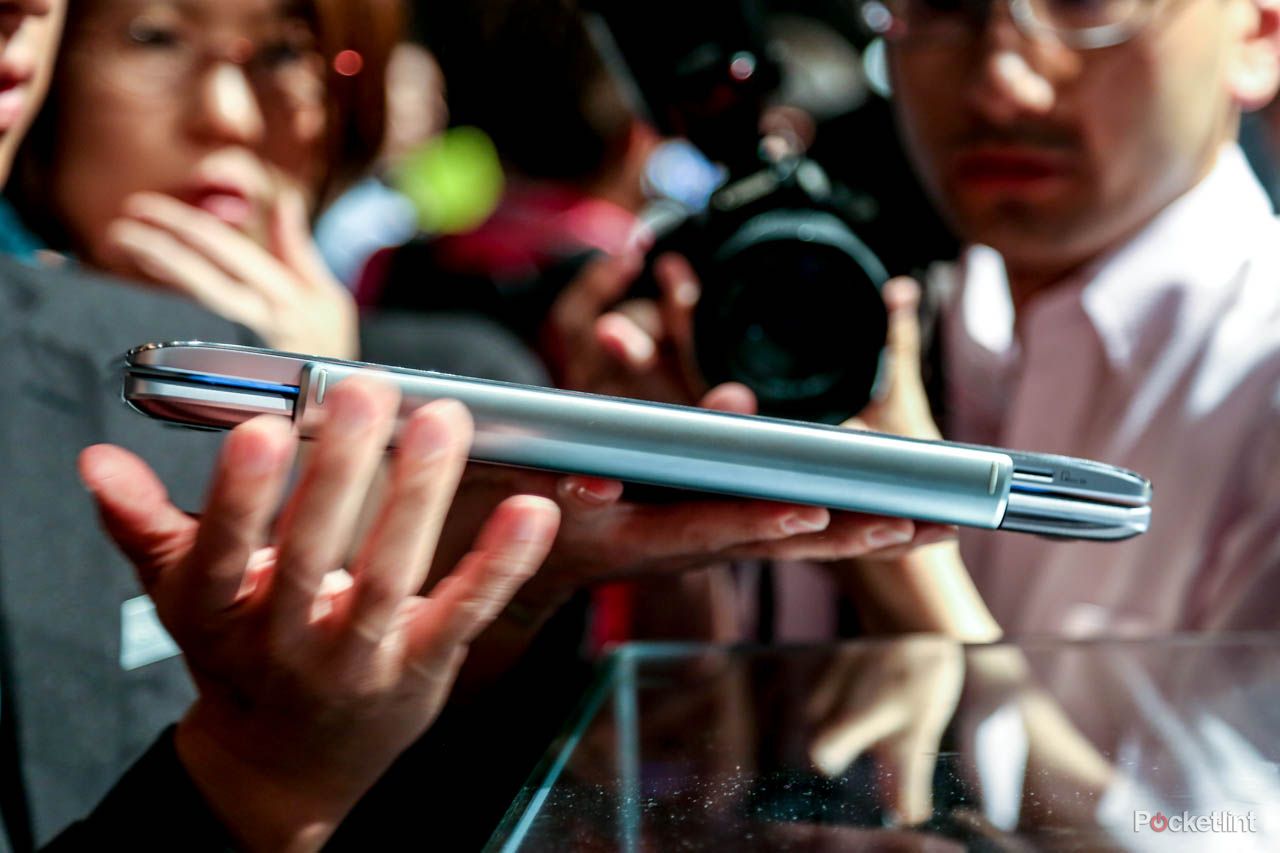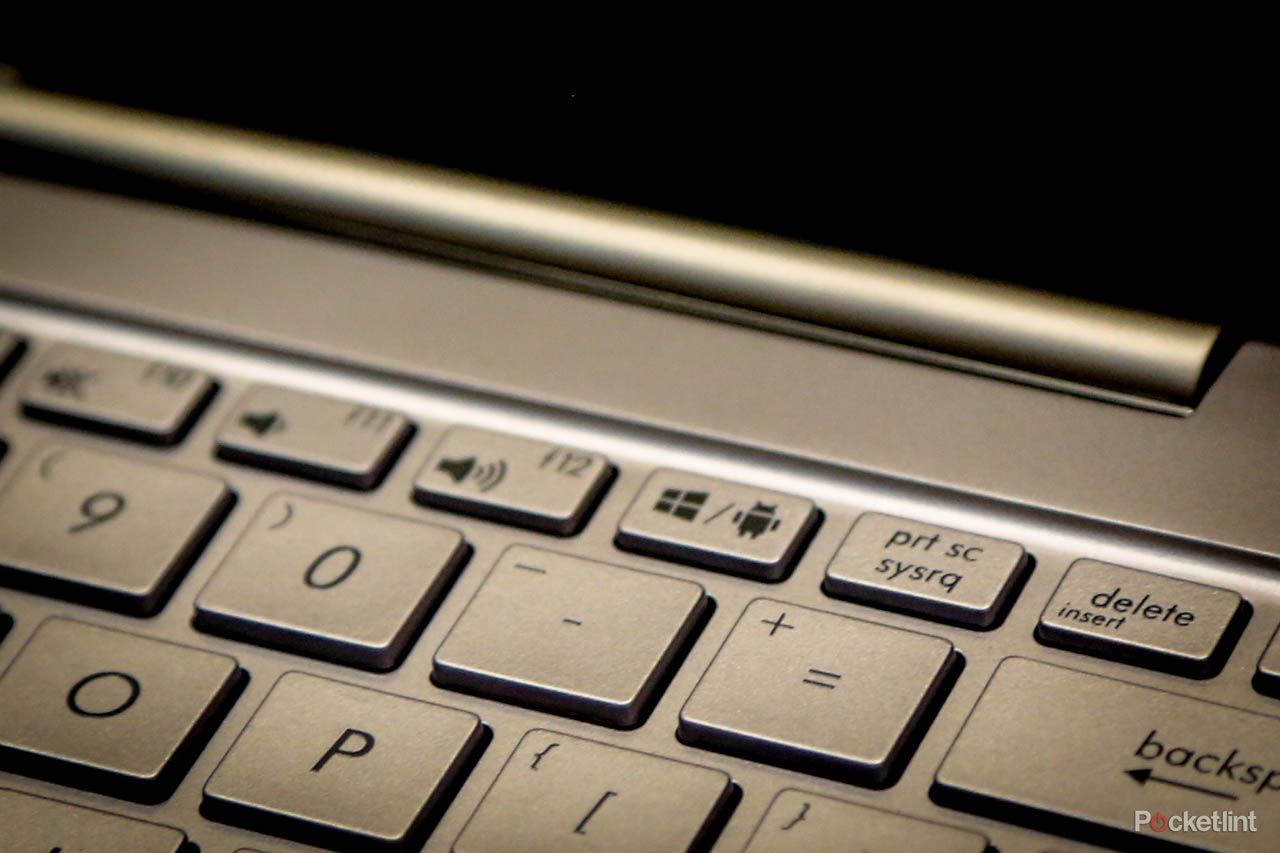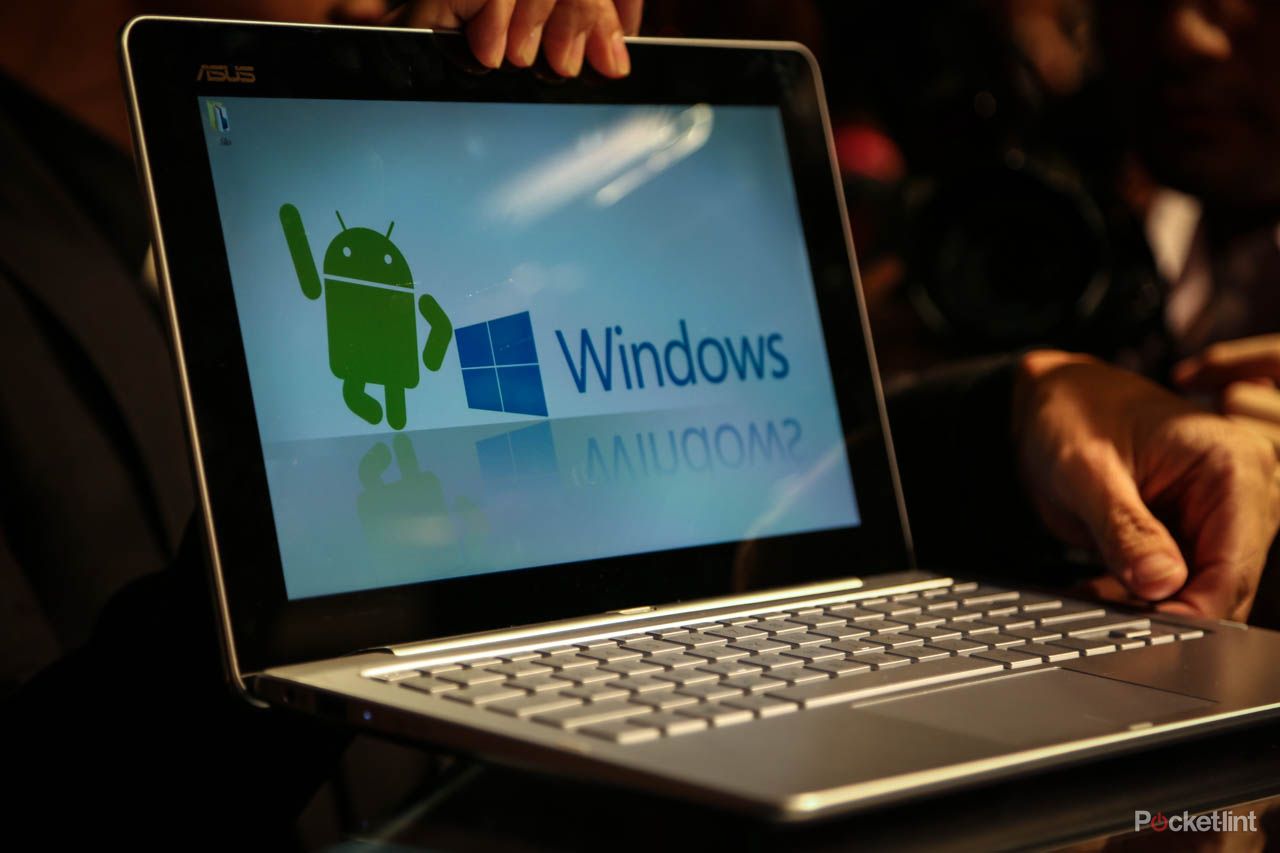After last year’s launch of the dual-screened Taichi at Computex, Asus has a bit of a reputation to maintain and it didn’t disappoint this year with the announcement of the Asus Transformer Book Trio – a three-in-one mobile device which switches between being an Android Jelly Bean tablet, Windows 8 notebook and a Windows 8 desktop PC.
The switch between the operating systems is surprisingly simple, with the Android OS being launched automatically when the tablet is detached, and a hot key allowing the user to switch between Windows 8 and Android in notebook mode. The dual OS gives users access to more than 700,000 apps from Google Play and a further 50,000 in the Windows store. Impressive, huh?
Although the set-up is reminiscent of pads with docking stations, picking it up while it is open in notebook mode quickly reminds you that this is a different ball game.
At first the Trio seems a bit heavy at around 1.05kg, but bear in mind that we are dealing with a dual-CPU. Breaking it down, according to the Asus staff on hand, the 64GB Intel Atom powered SSD tablet accounts for a very reasonable 450g and the keyboard - which houses a 750GB HDD - comes in at around 600g.
The PC Station dock runs the latest 4th-gen Intel Core i7 processor (Haswell) and can be hooked up to an external display to operate in the third form factor of desktop PC. That still leaves the tablet free to be run simultaneously in Android mode if you feel like multi-tasking or keeping a couple of kids amused.
The dock, which runs on a 31WH Li-polymer battery, also acts as battery bank for the tablet and Asus says that this, combined with the 19.5WH Li-polymer battery in the tablet, results in an impressive 15-hour battery life when running in Android and a not quite so impressive-sounding 6 hours on Windows 8.
Apparently it is quite simple to sync files, photos, videos and emails between the two operating systems. You can even continue surfing the same web page after detaching the pad (and so auto-switching to Android). Presumably concerns about music or movie libraries might be overcome by using WebStorage, which although it hasn’t yet been specified will probably come as part of the package.
The screen has a 16:9 ration boasts a Full HD IPS multi-touch display. A ten-point multi-touch function is also available as an option. However the glossy finish did seem to be prone to fingerprint smudging, although to be fair this was mainly evident around the edges where the various staff and models were holding it.
The chassis has the now classic Asus concentric brushed-aluminium finish and the docking hinge looked to be very sturdy, which allows for the stability required when using a touchscreen in notebook mode. The undocking process requires two hands, being operated from a button in the centre by the hinge, but seemed to be fluid enough that one would quickly become accustomed to it.
All in all this was another jump forward on Asus’s part and it will be interesting to see the final confirmed specifications when they are released. There were murmurs that the Trio would be shipping by autumn this year –we’ll keep you posted.
Now all you have to worry about is whether you need a three-in-one device

